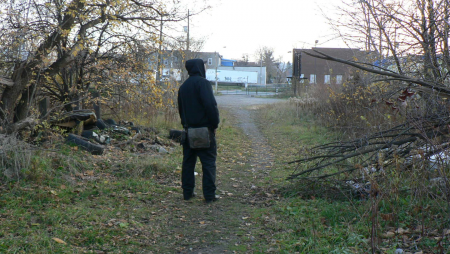from Knowing the Land is Resistance
We are settlers on this land, raised in cities, rootless, and alienated from the ecosystems we can’t help but be part of. But we want to unlearn what we have been taught by the dominant culture, and in the process, we want to re-learn joy, connection, and wonder, while embracing grief and loss in order to heal. We want to decolonize, and to do this, we need to build a new kind of relationship with the land. We want to take steps towards an anarchist ecology, towards a knowledge of the land that is anti-colonial and anti-authoritarian.
This introduction is the beginning of a seven-part series offering some ideas of what an anarchist ecology might be. The other parts will be released throughout April, this exciting springtime month of high water, busy birds, swelling buds, open windows, and wanderlust. We hope these words will compliment the re-birth and inspiration that this season brings you.
Towards an Anarchist Ecology – it’s a provocative phrase, but what does it mean? Let’s start by looking at each of these terms separately before we consider their meaning together.
Ecology is the study of interconnectedness in natural communities. It’s the way different plants, creatures, and forces interact with each other to create the conditions for the whole ecosystem. It is also the way they collaborate to bring about succession, the process by which one ecosystem gives way towards another. Succession is also a process of resiliency, towards more diversity and greater health. Theoretically, succession eventually reaches a climax community, which is a rich, stable ecosystem that self-perpetuates. However, climax ecosystems are in reality interconnected with systems of healthy disturbances like fire and wind, as well as impacted by human destruction. And so succession is constantly ongoing and all the various stages of succession are present in wild communities.
In our region, the northern-most edge of the Carolinian zone, between Lake Ontario and the Niagara Escarpment, the climax community is often characterized by the association of Sugar Maple and Beech – can you picture that tall, spacious canopy filtering green sunlight down to the soft leaf-littered ground and an understory of Ironwood, Blue Beech, Choke Cherry, and Pagoda Dogwood? Other climax communities around here are the Oak Savannah, now one of the world’s most endangered ecosystems, and the Oak-Hickory forest. Both of these are abundant food forests that sustained the Chonnonton (Neutral), Onandawaga (Seneca), and Misi-zaagiing (Mississauga) peoples whose traditional territory this land is.
